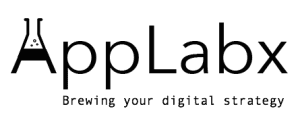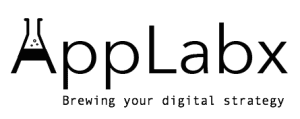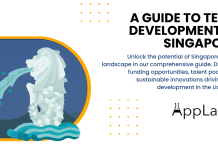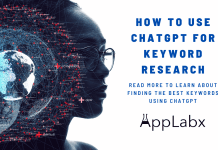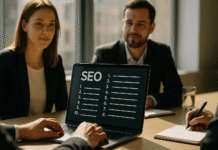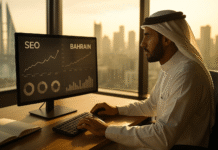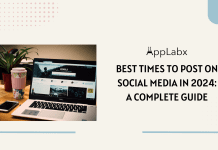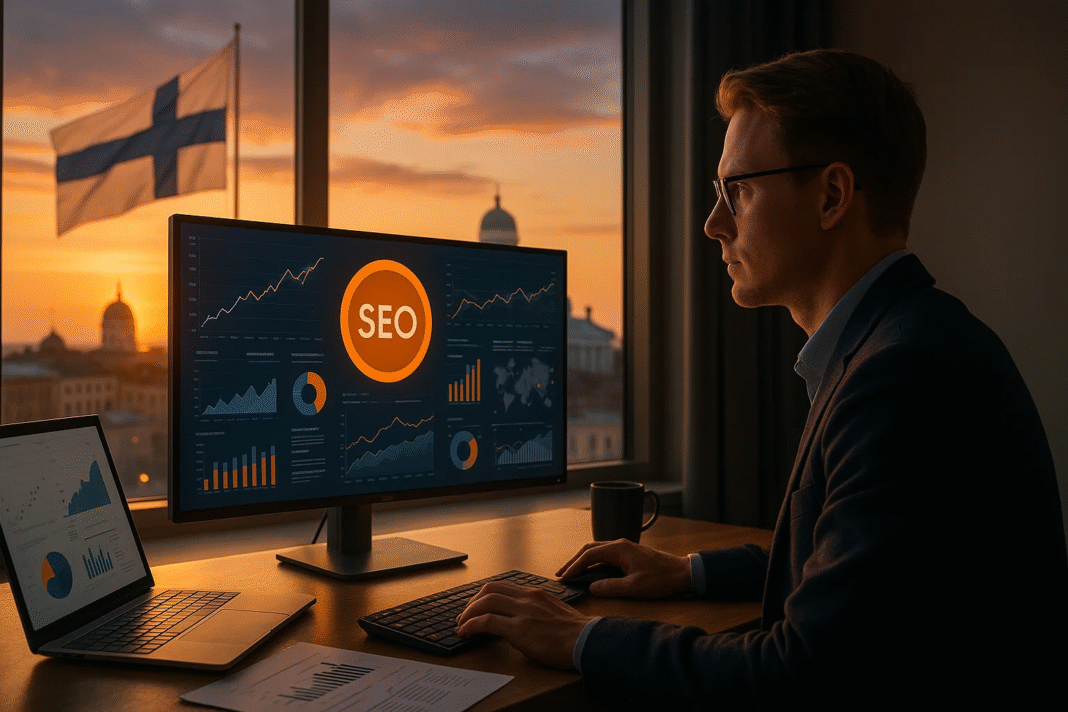Key Takeaways
- AI-driven search, voice optimisation, and predictive analytics are reshaping SEO strategies in Finland in 2025.
- Mobile-first performance, local SEO, and seamless user experience remain critical for digital competitiveness.
- Finnish businesses must focus on conversions, quality content, and continuous optimisation to secure long-term growth.
Search engine optimisation (SEO) in Finland has undergone a profound transformation in recent years, and 2025 marks a decisive turning point in how Finnish businesses approach digital visibility and online competitiveness. Finland, known for its advanced technological ecosystem, digitally literate population, and thriving start-up scene, has increasingly embraced the integration of artificial intelligence, mobile-first design, and data-driven strategies into its SEO frameworks. As global search trends continue to evolve, Finnish companies are adapting with precision, seeking to build strategies that go beyond simple keyword rankings and instead focus on conversions, engagement, and long-term growth.
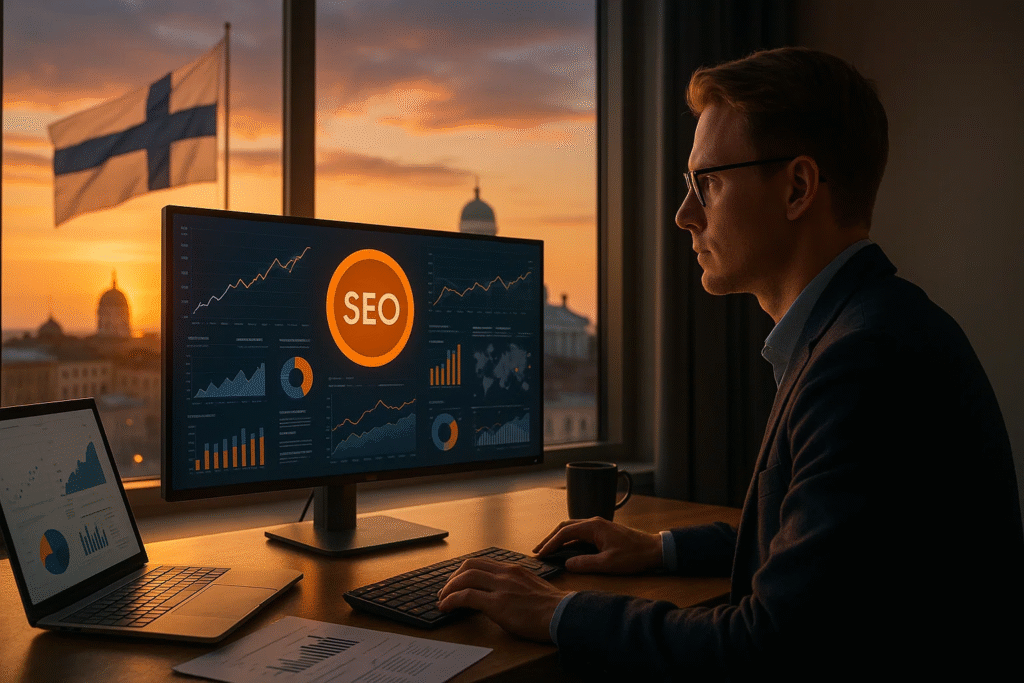
The Finnish digital landscape is shaped by high internet penetration, widespread mobile usage, and a culture that values trust, transparency, and quality content. In this environment, SEO has become a cornerstone of digital marketing, particularly for industries such as e-commerce, technology, tourism, and professional services. While Google continues to dominate the Finnish search engine market, the ways in which users interact with search results have shifted dramatically. AI-driven algorithms, predictive search, and voice-enabled queries are redefining how content is discovered, consumed, and valued. For Finnish businesses, this means that success in SEO requires a deeper understanding of search intent, advanced technical optimisation, and a commitment to delivering user-focused experiences.
One of the most significant changes shaping SEO in Finland in 2025 is the integration of AI-driven search models and Google’s AI Overview. These developments have altered how information is presented to users, often prioritising rich snippets and AI-generated summaries over traditional organic listings. As a result, zero-click searches are on the rise, pushing businesses to optimise not just for clicks but for visibility within AI-generated responses. This shift demands a more holistic approach to SEO—where structured data, authoritative content, and semantic relevance play a decisive role in driving online exposure.
Equally important is Finland’s strong adoption of mobile-first SEO practices. With mobile devices dominating search traffic, Google’s mobile-first indexing has reinforced the importance of speed, responsiveness, and seamless navigation. Finnish consumers, who are highly engaged digital users, expect fast, intuitive, and trustworthy experiences across devices. This makes technical SEO a critical component of every digital strategy, from page speed optimisation to Core Web Vitals and beyond.
Local SEO is also becoming increasingly important in Finland, especially for small and medium-sized enterprises (SMEs). Consumers in Finland often rely on Google Maps, local business listings, and reviews to make purchasing decisions. Businesses that effectively optimise their local presence—through accurate business profiles, location-specific content, and positive customer reviews—gain a significant advantage in reaching geographically targeted audiences. This trend reflects the growing importance of hyper-localised strategies that connect brands with consumers in real time and at the right stage of their decision-making journey.
Content strategy remains a central pillar of SEO in Finland, but the expectations have grown more sophisticated. In 2025, successful SEO content is no longer just about targeting keywords; it must answer complex user queries, demonstrate expertise, and deliver measurable value. Finnish businesses that create in-depth, authoritative, and well-structured content are rewarded not only with higher rankings but also with greater trust and brand loyalty. At the same time, link-building strategies have shifted toward quality over quantity, with emphasis on securing backlinks from credible, contextually relevant sources that align with brand values.
From a broader perspective, Finland’s position as a digitally advanced nation means that its SEO trends mirror some of the most progressive developments seen globally, while also reflecting unique cultural and linguistic factors. The Finnish language, with its complexity and specific search behaviour patterns, adds an additional dimension to SEO, requiring tailored approaches to keyword research, content creation, and multilingual optimisation for businesses operating across Nordic and European markets.
This data-driven report and strategic outlook will explore the current state of SEO in Finland in 2025, unpacking the trends, challenges, and opportunities shaping the market. From the rise of AI-powered search and mobile-first dominance to the strategic importance of local SEO and content-driven authority, the analysis provides a comprehensive guide for businesses, marketers, and decision-makers. The insights shared here will not only help companies understand where Finland stands today but also prepare them for the future trajectory of SEO in a rapidly evolving digital economy.
But, before we venture further, we like to share who we are and what we do.
About AppLabx
From developing a solid marketing plan to creating compelling content, optimizing for search engines, leveraging social media, and utilizing paid advertising, AppLabx offers a comprehensive suite of digital marketing services designed to drive growth and profitability for your business.
At AppLabx, we understand that no two businesses are alike. That’s why we take a personalized approach to every project, working closely with our clients to understand their unique needs and goals, and developing customized strategies to help them achieve success.
If you need a digital consultation, then send in an inquiry here.
Or, send an email to [email protected] to get started.
The State of SEO in Finland in 2025: A Data-Driven Report and Strategic Outlook
- Finland’s Digital Landscape in 2025: A Foundational Analysis
- The Search Ecosystem: Market Dominance and Diversification
- The Economic and Strategic Imperatives of SEO
- The Cost of SEO in Finland: A Quantitative Analysis
- The AI Revolution: Transforming Finnish SEO in 2025
- Measuring Success: Metrics and Case Studies
- Strategic Recommendations and Outlook for 2025
1. Finland’s Digital Landscape in 2025: A Foundational Analysis
Finland’s digital ecosystem in 2025 presents a unique blend of technological sophistication, high connectivity, and digitally empowered consumers. Understanding these foundational elements is essential for any business or SEO professional aiming to thrive in the Finnish online market. This report explores Finland’s digital landscape, infrastructure, user behavior, and the implications for SEO strategy in 2025.
Finland’s Digital Connectivity Landscape
- Population and Internet Penetration
- Finland has a population of 5.62 million, with 5.52 million active internet users.
- Internet penetration stands at an extraordinary 98.2%, reflecting near-universal online engagement.
- Year-over-year growth in active users (+0.2%) demonstrates the steady expansion and stability of digital adoption.
- Mobile Connectivity and Multi-Device Usage
- Total cellular mobile connections: 9.09 million, exceeding the population by 62%, indicating widespread multi-device ownership.
- The prevalence of multiple mobile connections suggests Finnish users interact across various devices, making cross-platform consistency critical for SEO.
- Median mobile internet download speed: 114.45 Mbps, supporting mobile-first engagement strategies.
- Implications for SEO
- A mobile-first approach is not optional; it is essential for meeting user expectations.
- Slow or fragmented mobile experiences can directly reduce engagement and increase bounce rates, impacting search rankings and business performance.
Digital Infrastructure and Consumer Behavior
- Network Performance and Technological Environment
- Median fixed internet download speed: 133.72 Mbps, demonstrating a high-performance wired infrastructure.
- Mobile and fixed-line speeds grew +12.1% and +22.0% respectively year-over-year, highlighting continuous network enhancements.
- Near-complete 5G coverage enables seamless mobile interactions and faster content delivery.
- E-Commerce and Mobile Engagement
- Approximately 40% of online transactions are conducted via smartphones or tablets.
- Fast, reliable internet access drives mobile commerce adoption, positioning responsive websites as a strategic necessity.
- User experience fragmentation or slow page load times can result in significant competitive disadvantage.
- Digital Payment Trends
- Preferred online banking: ~60% of users.
- Third-party payment services such as PayPal: 62% usage.
- Mobile payment solutions: ~30%, indicating an increasingly diverse and digitally literate consumer base.
- SEO Implications
- Websites must integrate seamless payment and transaction flows for improved UX and higher conversion rates.
- Technical SEO, including mobile optimization, fast page loading, and structured data, is crucial for capturing Finnish online consumers.
Finland Digital Demographics and Connectivity Matrix (2025)
| Metric | Value | SEO Implications |
|---|---|---|
| Population | 5.62 million | Broad target audience, high digital literacy |
| Internet Users | 5.52 million | Near-total reach for online campaigns |
| Internet Penetration | 98.2% | Essential to prioritize online channels |
| Cellular Mobile Connections | 9.09 million | Multi-device engagement opportunities |
| Mobile Connections / Population | 162% | Importance of responsive design & cross-platform SEO |
| Median Mobile Download Speed | 114.45 Mbps | Fast mobile page speed is critical |
| Median Fixed Download Speed | 133.72 Mbps | Supports high-quality multimedia content |
Strategic SEO Considerations for Finland in 2025
- Mobile-First Optimization
- High mobile usage and speeds necessitate mobile-responsive design, accelerated mobile pages (AMP), and lightweight frameworks.
- Technical SEO Priority
- Fast loading times, structured data, schema markup, and server optimization are essential to compete in a hyper-connected market.
- User Behavior Analysis
- Insights into payment methods, device usage, and online shopping preferences can inform content strategy, UX improvements, and conversion optimization.
- Localized SEO Opportunities
- Despite universal connectivity, regional consumer behavior and language preferences can influence search visibility.
2. The Search Ecosystem: Market Dominance and Diversification
The Finnish search landscape in 2025 is characterized by a dominant global player alongside several niche engines that cater to specialized user segments. Understanding the nuances of platform preference, device usage, and host behavior is essential for developing a sophisticated SEO strategy in Finland.
Google’s Dominance and Strategic Implications
- Overall Market Leadership
- Google maintains an overwhelming presence in Finland, commanding 89.71% of the overall search engine market.
- Device-specific insights highlight Google’s stronger influence on mobile, where its share reaches 94.3%, compared to 80.63% on desktop.
- Local vs Global Domain Preference
- Finnish searchers predominantly use the global google.com domain (87.02%), with the local google.fi domain capturing only 2.28% of host traffic.
- Implications for SEO: While local optimization (Finnish-language keywords, Google Business Profiles) remains essential, high-quality content targeting a broader, global audience is equally critical.
- SEO Considerations
- Emphasis on mobile-first optimization, structured data, and globally accessible content is crucial due to Google’s mobile dominance.
- Businesses must balance local relevance with international reach to maximize visibility and traffic acquisition.
Niche Search Engines: Targeted Opportunities
- Market Share Distribution
- Bing: 3.78% overall, 10.14% desktop, 0.56% mobile.
- Yandex: 3.57% overall, 4.57% desktop, 3.07% mobile.
- DuckDuckGo: 1.7% overall, 2.56% desktop, 1.27% mobile.
- Yahoo: 0.59% overall, 1.46% desktop, negligible mobile presence.
- Mail.ru: 0.24% across all devices.
- User Segmentation and Strategic Insights
- Bing: Predominantly B2B users; optimization may benefit business-focused campaigns.
- Yandex: Relevant for audiences linked to Russia, including business and tourism sectors.
- DuckDuckGo: Increasingly popular among privacy-conscious users; suitable for brand differentiation.
- Yahoo & Mail.ru: Limited presence but can provide niche traffic where resources allow.
- Implications for SEO Strategy
- Full-scale optimization for these engines is not cost-effective, but selective targeting can yield high-value, underutilized traffic.
- Allocation of SEO resources should be informed by platform-specific user intent, competitive saturation, and strategic goals.
Search Engine Market Share Matrix: Finland (July 2025)
| Search Engine | Overall Market Share | Desktop Market Share | Mobile Market Share | Strategic Insights |
|---|---|---|---|---|
| 89.71% | 80.63% | 94.3% | Mobile-first global content strategy is critical | |
| Bing | 3.78% | 10.14% | 0.56% | B2B targeting; desktop-focused campaigns valuable |
| Yandex | 3.57% | 4.57% | 3.07% | Useful for Russian-linked business & tourism traffic |
| DuckDuckGo | 1.7% | 2.56% | 1.27% | Privacy-conscious audience; niche differentiation opportunity |
| Yahoo | 0.59% | 1.46% | – | Minor traffic; strategic targeting optional |
| Mail.ru | 0.24% | 0.25% | 0.24% | Minimal influence; low-priority targeting |
Strategic Recommendations for 2025
- Prioritize Google SEO: Optimize mobile experience, ensure fast page load speeds, leverage structured data, and maintain high-quality content.
- Implement targeted campaigns on niche engines: Allocate small, focused resources to Bing, Yandex, and DuckDuckGo for specific audience segments.
- Balance local and global SEO: Combine Finnish-language keyword optimization with globally oriented content to capture traffic from both google.fi and google.com.
- Monitor device-specific engagement: Desktop users on Bing and Yandex behave differently than mobile users on Google; adapt UX and content accordingly.
3. The Economic and Strategic Imperatives of SEO
In Finland’s increasingly competitive digital ecosystem, SEO has emerged as a cornerstone of strategic marketing. Understanding the economic context, user behavior, and the comparative value of organic search is essential for businesses aiming to maximize ROI and sustain long-term online growth.
Finnish Advertising Market: Size and Growth Dynamics
- Market Overview
- The Finnish advertising sector is projected to reach a total turnover of €1.3 billion in 2025, reflecting a modest growth rate of 2.4%.
- Comparatively, global digital advertising expenditure is expected to expand by 7.9%, reaching $678.7 billion.
- Search advertising alone is anticipated to grow globally by 8.3%, emphasizing the continuing importance of search-focused strategies.
- Market Maturity and Strategic Implications
- The slower growth in Finland suggests a mature, well-penetrated market where incremental gains require precision and efficiency.
- For businesses operating in such an environment, optimizing marketing spend is critical. SEO offers a compelling advantage by generating organic traffic sustainably without the recurring costs associated with paid advertising campaigns.
- SEO as a High-ROI Investment
- SEO transforms long-term content and technical optimizations into continuous traffic generation.
- In contrast to display ads or paid search, which demand constant capital infusion, SEO produces cumulative benefits and enduring visibility.
- SMEs, in particular, benefit from establishing a strong organic presence, as it reduces reliance on expensive paid campaigns and mitigates competitive pressures.
The Value Proposition of Organic Search
- Click-Through Rate (CTR) Insights
- Top three organic search results capture 68.7% of all clicks on Google’s results pages:
- First position: 39.8% CTR
- Second position: 18.7% CTR
- Third position: 10.2% CTR
- By contrast, average display advertising CTR in Finland is only 0.05%, demonstrating the stark disparity in user engagement.
- Top three organic search results capture 68.7% of all clicks on Google’s results pages:
- Strategic Implications for Businesses
- Investing in SEO yields a consistent flow of high-intent visitors.
- High-ranking organic results not only improve visibility but also enhance credibility and brand authority.
- Paid campaigns can supplement traffic but are not substitutes for organic search performance, particularly in a market where margins for error are small.
- SME Considerations
- Small and medium enterprises that neglect SEO risk losing significant digital visibility to competitors who prioritize search optimization.
- Organic rankings function as long-term strategic assets, generating predictable traffic that can underpin marketing, sales, and conversion strategies.
Organic vs Paid Performance Matrix: Finland 2025
| Metric | Organic Search | Paid Display Ads | Strategic Insight |
|---|---|---|---|
| Top 1 CTR | 39.8% | 0.05% | Organic vastly outperforms display in engagement |
| Top 2 CTR | 18.7% | – | Securing top positions remains critical |
| Top 3 CTR | 10.2% | – | Even secondary ranks provide significant traffic |
| Cost Dependency | Minimal after initial investment | Continuous capital required | SEO offers long-term cost efficiency |
| Traffic Consistency | High and sustained | Temporary and campaign-dependent | Organic search strengthens brand stability |
Strategic Recommendations for SEO Investment
- Prioritize Organic Search
- Focus on high-quality content creation, keyword optimization, and technical SEO improvements to secure top positions in Google.
- Integrate Paid and Organic Campaigns
- Use paid search selectively to support organic efforts, particularly for competitive keywords or time-sensitive promotions.
- Long-Term ROI Planning
- Treat SEO as a strategic asset, investing in consistent optimization that compounds over time and reduces dependency on paid channels.
- Leverage Data-Driven Insights
- Analyze search CTRs, user intent, and competitor rankings to refine content strategy and improve conversion efficiency.
4. The Cost of SEO in Finland: A Quantitative Analysis
Understanding the financial landscape of SEO in Finland is critical for businesses seeking to make informed investment decisions. In 2025, the Finnish SEO market reflects both a diversity of service models and a strong correlation between expenditure and measurable performance outcomes.
SEO Pricing Models and Market Benchmarks
- Overall Cost Range
- SEO services in Finland vary widely, with entry-level campaigns starting at €500 per month, and large-scale, enterprise-level projects exceeding €30,000 monthly.
- The majority of standard business campaigns typically fall within €1,000–€2,500 per month.
- Payment Structures
- Monthly retainer model: 55% of businesses adopt this model, offering predictable costs and continuous optimization.
- Project-based: 25% of businesses prefer defined-scope campaigns with fixed pricing.
- Hourly: 20% of businesses engage SEO experts on a time-based rate.
- Cost by Provider Type
| Provider Type | Average Monthly Cost (€) | Average Hourly Rate (€) | Strategic Considerations |
|---|---|---|---|
| Freelancer | €200–€2,000 | €50–€60 | Suitable for small, niche campaigns or local SEO; may lack scalability |
| Digital Agency | €1,000–€6,000 | €60–€100+ | Ideal for multi-channel strategies; balances cost and expertise |
| SEO Agency | €2,000–€8,000+ | €100–€120+ | Comprehensive, enterprise-focused campaigns; includes technical, content, and link-building services |
- Service Level Pricing
| Service Level | Typical Monthly Retainer (€) | Target Audience |
|---|---|---|
| Local SEO | €1,500–€3,500 | Small businesses targeting regional markets |
| Small Business SEO | €2,500–€5,000 | SMEs with multi-location or expanding online presence |
| Mid-Market SEO | €4,000–€8,000 | Medium-sized enterprises with broader digital objectives |
| Enterprise SEO | €7,500–€15,000+ | Large corporations requiring international or multi-language optimization |
Strategic Investment and Return on SEO
- Linking Cost to Performance
- Higher-priced SEO services correspond with greater strategic depth, including technical audits, content strategy, and high-quality link acquisition.
- Example: A Finnish retail client implementing a tailored SEO strategy experienced a 60% increase in web traffic and a measurable lift in conversions within six months.
- Value-Driven Considerations
- The Finnish market exhibits comparatively high link-building costs, emphasizing the need to prioritize quality over quantity and to focus on reputable local domains.
- Businesses that align investment with long-term objectives—rather than chasing the lowest price—achieve superior ROI and sustainable traffic growth.
- Market Fragmentation
- The diverse range of pricing models indicates a fragmented market. Low-cost options may compromise service quality, while higher-end retainers provide holistic solutions with measurable outcomes.
- Strategic budgeting should consider campaign scope, target audience, and anticipated ROI rather than simply cost minimization.
SEO Investment vs ROI Matrix: Finland 2025
| Investment Level | Scope | Expected Outcomes | Strategic Insight |
|---|---|---|---|
| Low (€500–€1,500) | Small-scale/local campaigns | Limited traffic, modest CTR improvements | Suitable for niche/local visibility; may not scale |
| Mid (€1,500–€5,000) | Standard business campaigns | Moderate traffic growth, measurable conversions | Balances cost and performance; ideal for SMEs |
| High (€5,000–€15,000+) | Enterprise-level campaigns | Significant organic traffic, high conversion impact | Comprehensive strategy; long-term ROI maximized |
| Specialized Retainer (€2,000–€8,000+) | Technical SEO, content, link-building | Sustained visibility and authority | Ensures market leadership and high-quality performance |
Strategic Recommendations for Businesses
- Align Budget with Goals
- Prioritize providers and service levels that match your long-term growth objectives rather than opting for minimal-cost solutions.
- Focus on Performance Metrics
- Measure success via traffic growth, conversion rates, and keyword rankings rather than just cost efficiency.
- Invest in Comprehensive Retainers
- Full-service retainers offer technical, content, and off-page SEO support, maximizing ROI and reducing reliance on continuous paid campaigns.
- Leverage Quality over Quantity
- In Finland, investing in authoritative link-building and high-quality content is more valuable than pursuing large volumes of low-value backlinks.
5. The AI Revolution: Transforming Finnish SEO in 2025
Artificial intelligence has become a defining force in reshaping digital ecosystems globally, and Finland is no exception. In 2025, AI-driven search and content systems are fundamentally altering how users seek information, how search engines deliver results, and how businesses structure their SEO strategies. For Finnish companies, adapting to this algorithm-driven future is no longer optional but a strategic imperative.
AI’s Transformation of the Finnish Search Landscape
- User Reliance on AI-Generated Results
- A 2025 study reveals that 80% of Finnish consumers depend on AI-powered systems for approximately 40% of their searches.
- This indicates a major behavioral shift, where users increasingly bypass conventional SERPs and advertising spaces in favor of direct AI recommendations.
- Google’s AI Overviews (AIO) and Strategic Impact
- AIO has emerged as the most disruptive innovation, reshaping organic visibility and click-through dynamics.
- While basic informational queries may see reduced clicks, results that secure a place in AIO snippets can achieve CTRs between 38.9%–42.9%, rivaling or surpassing traditional organic performance.
- The SEO battlefield is no longer about ranking solely for keywords but about being included in authoritative AI-generated responses.
- Content Strategy in the AI Era
- Success now hinges on producing comprehensive, accurate, and trustworthy content that AI systems deem credible enough to cite.
- The age of “positional obsession” (focusing narrowly on SERP rankings) is evolving into an environment where brand authority, expertise, and topical depth are the key differentiators.
AI Integration in Finnish Business and Governance
- Government Investment in AI and Emerging Technologies
- Finland has allocated €559 million toward digital transformation, targeting leadership in AI, 5G, and quantum computing.
- This policy-driven initiative provides fertile ground for businesses to adopt and scale AI applications in marketing and SEO.
- Corporate Adoption Trends
- By 2028, over one-third of Finnish organizations plan to integrate AI for SEO and campaign personalization.
- AI-assisted content creation is widespread: 87% of SEO professionals report using AI in production workflows.
- However, only 4% publish AI content without human review, underscoring the industry consensus that human expertise is indispensable for ensuring authority and compliance with Google’s quality standards.
- Hybrid AI-Human Workflows
- Example 1: The Finnish Tax Administration leveraged AI to generate landscape imagery, which was then human-edited to authentically represent Finland’s seasonal diversity.
- Example 2: The Digital Office Company (DOC) adopted a hybrid model, combining traditional machine learning with a generative LLM (Mistral AI’s Mixtral-8x7B) to classify business documents.
- These cases illustrate that Finnish organizations use AI not as a replacement but as an augmentation of human skill, reinforcing trust, cultural accuracy, and quality.
AI in SEO: Strategic Implications for Finland in 2025
- Shift in SEO Objectives
- From ranking for keywords to achieving brand visibility in AI-generated results.
- From optimizing pages solely for SERPs to training AI models through structured, authoritative, and verifiable content.
- Content and Trust as Core Assets
- E-E-A-T principles (Experience, Expertise, Authoritativeness, Trustworthiness) carry greater weight as AI systems prioritize reliable sources.
- Brands must focus on depth of coverage, domain authority, and credibility to maximize inclusion in AIO snippets.
- Balancing AI Efficiency with Human Oversight
- AI accelerates content production, keyword clustering, and predictive SEO analysis.
- Human strategists refine tone, cultural resonance, and credibility, ensuring alignment with both user expectations and algorithmic requirements.
Matrix: AI and SEO Transformation in Finland, 2025
| Dimension | Traditional SEO (Pre-AI) | AI-Driven SEO (2025) | Strategic Takeaway |
|---|---|---|---|
| Ranking Focus | SERP positions for keywords | Inclusion in AI Overviews & AI answers | Authority matters more than positional rank |
| User Behavior | Click-through on search results | Direct answers from AI-powered snippets | Optimize for query resolution, not just ranking |
| Content Creation | Human-only | AI-assisted, human-edited | Hybrid workflows maximize scale + trust |
| Government & Market | Moderate support for digitalization | €559M investment in AI & tech | Strong infrastructure accelerates adoption |
| Business Integration | Limited personalization | AI-enhanced targeting & predictive SEO | AI personalization reshapes campaigns |
Strategic Recommendations for Finnish Businesses
- Invest in AI-Ready Content
- Build topic clusters, structured data, and authoritative articles that can feed AI-driven search models.
- Adopt Hybrid SEO Practices
- Use AI tools for speed and scale but rely on human expertise for authenticity, compliance, and cultural accuracy.
- Leverage Government Incentives
- Align business digital strategies with Finland’s national AI transformation agenda to gain early advantages.
- Prepare for a Multi-Channel SEO Future
- Optimize not only for Google’s AIO but also for AI-driven discovery platforms, voice search systems, and chat-based interfaces.
6. Measuring Success: Metrics and Case Studies
Evaluating SEO success in 2025 requires a sophisticated, data-driven framework. In Finland’s competitive and digitally advanced market, businesses must look beyond superficial metrics such as keyword rankings and instead focus on performance indicators that reflect user engagement, brand authority, and business growth. The rise of AI-driven search experiences has transformed the benchmarks of success, shifting the emphasis from volume-based visibility to value-based outcomes.
Key SEO Performance Indicators in 2025
To thrive in Finland’s AI-influenced digital ecosystem, businesses must track metrics that capture audience quality, engagement depth, and conversion efficiency.
- Organic Search Traffic
- Represents the volume of visitors arriving from non-paid search results.
- In 2025, Finnish websites observe stronger quality signals from AI-curated results, where fewer but more qualified visitors convert at higher rates.
- Conversion Rates
- Percentage of users completing key business actions (purchase, lead form, booking, subscription).
- In Finland, B2B sectors are reporting average SEO-driven conversion rates of 3.5–4.2%, significantly outperforming paid campaigns.
- Bounce Rate & Engagement Signals
- A lower bounce rate indicates content relevance and alignment with user intent.
- Google’s algorithm in 2025 places higher weight on engagement signals, rewarding sites that demonstrate longer on-page activity and diverse user interaction.
- Average Time on Page
- Reflects content depth, authority, and audience interest.
- Finnish news portals and e-commerce sites leveraging AI-personalised content are averaging 2.7–3.1 minutes per visit.
- Core Web Vitals & Site Speed
- Technical SEO remains crucial, particularly as mobile-first indexing dominates.
- Finnish businesses targeting international audiences are adopting 5G-enhanced hosting solutions, ensuring page load speeds under 2.5 seconds.
KPI Benchmarking Matrix for Finnish SEO in 2025
| KPI Metric | 2023 Average | 2025 Best Practice in Finland | Strategic Insight |
|---|---|---|---|
| Organic Search Traffic | Moderate | Highly Qualified, Intent-Driven | Focus on AI-optimised queries |
| Conversion Rate | 2.1% | 3.5–4.2% | Prioritise lead quality over volume |
| Bounce Rate | 49% | < 35% | Enhanced by contextual AI content |
| Average Time on Page | 1.9 min | 2.7–3.1 min | Richer, interactive formats |
| Page Load Speed | 3.4 sec | < 2.5 sec | Critical for ranking & retention |
Real-World Case Studies from Finland
- Retail Sector Transformation
- A mid-sized Finnish retailer faced stagnation due to poor technical SEO and weak content targeting.
- After adopting an AI-enhanced SEO strategy focusing on semantic search optimisation and structured data integration, results included:
- 60% increase in organic traffic within six months.
- 45% growth in online sales, driven by enhanced product visibility in AI Overviews.
- Stronger presence in geo-targeted searches for Helsinki, Tampere, and Turku.
- B2B Technology Firm
- A SaaS provider in Finland integrated predictive SEO analytics with AI-generated content frameworks.
- Achievements included:
- 38% increase in qualified leads.
- Improved domain authority, rising from DA 42 to DA 57 in one year.
- Enhanced CTR in AI snippets, with rates reaching 41%, outperforming traditional organic links.
Strategic Outlook
- Finnish companies in 2025 are moving away from keyword-centric vanity metrics and toward holistic SEO value chains.
- Success is defined by business outcomes—leads, revenue, and customer loyalty—rather than surface-level impressions.
- AI-powered search has created a landscape where content quality, technical readiness, and authority signals carry more weight than ever before.
7. Strategic Recommendations and Outlook for 2025
The closing insights of this report consolidate the core findings into a forward-looking roadmap for Finnish businesses. These recommendations serve as both a strategic compass and a practical toolkit, ensuring that organizations in Finland remain competitive in an era where artificial intelligence, mobile-first experiences, and multi-channel search ecosystems dominate.
Strategic Imperatives for Finnish Businesses
- Embrace AI-Augmented SEO Practices
- Artificial intelligence should be regarded as a collaborative ally, not a disruptive threat.
- Finnish enterprises must harness AI for:
- Predictive content optimization.
- Real-time keyword and topical clustering.
- Automated but supervised content creation.
- Human expertise remains indispensable for contextual accuracy, E-E-A-T alignment, and trust-building.
- Hybrid models that merge automation with editorial refinement will define the next phase of Finnish SEO.
- Prioritize Local SEO and Mobile Experience
- Mobile-first design is crucial, as over 85% of Finnish internet users primarily access search through mobile devices.
- Local SEO is a cornerstone, particularly for small and medium-sized businesses (SMEs).
- Core areas of focus:
- Google Business Profile optimization.
- Hyper-local keyword strategies.
- Seamless user navigation on mobile.
- Site speed and Core Web Vitals are no longer technical enhancements but business-critical elements influencing both ranking and conversions.
- Invest in Quality Content and Ethical Link-Building
- Algorithmic sophistication demands content that is:
- Comprehensive.
- Contextually relevant.
- Expert-led and verifiable.
- Long-form, data-rich content is increasingly rewarded, especially for industries such as finance, healthcare, and technology.
- Finland’s competitive digital landscape also highlights the need for sustainable link-building strategies, including:
- Partnerships with local industry associations.
- Academic collaborations with universities.
- Thought-leadership-driven digital PR.
- Algorithmic sophistication demands content that is:
- Shift Measurement from Clicks to Conversions
- The advent of AI Overviews (AIO) has reshaped success metrics.
- Instead of focusing narrowly on impressions or clicks, businesses should track:
- Conversion rates.
- Customer lifetime value (CLV).
- Engagement depth (e.g., scroll rate, return visits).
- This recalibration ensures SEO delivers measurable commercial outcomes rather than vanity metrics.
Comparative Matrix: Traditional vs. Future-Focused SEO in Finland
| Dimension | Traditional SEO Focus | Future-Focused SEO in 2025 (Finland) |
|---|---|---|
| Ranking Metrics | Keyword positions | AI visibility & inclusion in AIO snippets |
| Content Approach | Short, keyword-heavy text | Long-form, expert-driven, AI-ready content |
| User Experience | Desktop-optimized | Mobile-first, speed-driven, seamless UX |
| Measurement Focus | Click-through rates | Conversions, engagement depth, CLV |
| Link-Building | Bulk link acquisition | Strategic, high-authority, relationship-based |
| Technology Use | Manual SEO tasks | AI-assisted predictive and adaptive SEO |
The Future of SEO in Finland
- Multi-Channel Fragmentation
- The search landscape is expanding beyond Google, with conversational AI, voice interfaces, and social search influencing consumer journeys.
- Finnish businesses must adopt an omnichannel strategy, aligning SEO with paid, social, and conversational search ecosystems.
- National and EU-Level Investments in AI and Connectivity
- Finland’s €559 million digital transformation agenda, combined with EU investments in AI governance and infrastructure, strengthens the country’s role as a digital innovation hub.
- Businesses that adapt early to AI governance frameworks will have a compliance and trust advantage.
- Finland as a Testbed for Next-Generation SEO
- With advanced digital adoption, strong government backing, and a culture of technological experimentation, Finland is uniquely positioned to pioneer best practices in:
- AI-driven personalization.
- Data ethics in digital marketing.
- Cross-border SEO strategies in multilingual EU markets.
- With advanced digital adoption, strong government backing, and a culture of technological experimentation, Finland is uniquely positioned to pioneer best practices in:
- Adaptability as the Ultimate Advantage
- The velocity of change means SEO is no longer a static discipline but a dynamic system requiring continuous recalibration.
- Organizations that institutionalize agility—through real-time analytics, iterative experimentation, and hybrid human-AI workflows—will sustain long-term visibility and market leadership.
Strategic Outlook Summary Chart
| Strategic Priority | Importance in 2025 | Long-Term Impact (2025–2030) |
|---|---|---|
| AI-Augmented SEO | Critical | High – AI dominance in search |
| Mobile & Local Optimization | Essential | High – User behavior shift |
| Quality Content & Link Building | Essential | Medium-High – Trust & E-E-A-T |
| Conversion-Centric Measurement | Critical | High – Aligns SEO with ROI |
| Omnichannel SEO Strategy | Emerging Priority | Very High – Fragmented search |
Conclusion
As Finland continues to solidify its reputation as a digitally progressive nation, the state of SEO in 2025 reflects both maturity and transformation. This report has underscored the ways in which artificial intelligence, mobile-first experiences, local optimization, and multi-channel search dynamics are reshaping how Finnish businesses compete for visibility in a rapidly evolving digital ecosystem.
A Landscape Defined by AI and Human Synergy
- AI has emerged as the defining force of the new SEO paradigm. From predictive analytics and content clustering to real-time keyword optimization, AI is streamlining how businesses adapt to algorithmic shifts.
- However, the Finnish market demonstrates that AI cannot fully replace human expertise. Editorial judgment, industry-specific knowledge, and cultural nuance remain indispensable to building trust and authority in content.
- The winning formula for 2025 and beyond will be hybrid: combining AI-driven scalability with human-led expertise to maintain both efficiency and credibility.
Mobile-First and Local SEO as Non-Negotiable
- With one of the highest mobile penetration rates in Europe, Finland is now a mobile-first nation in practice, not just in theory.
- This reality demands websites that load seamlessly, meet Core Web Vitals, and deliver frictionless user experiences across devices.
- Local SEO has become especially vital for SMEs and service-based industries. Finnish consumers expect businesses to be easily discoverable through local search, with optimized Google Business Profiles, accurate NAP data, and geo-targeted strategies.
Content as a Driver of Trust and Authority
- The sophistication of search algorithms means superficial keyword placement is no longer sufficient.
- Finnish SEO strategies increasingly rely on long-form, expert-authored, and data-rich content that can withstand scrutiny from both search engines and highly informed users.
- In parallel, ethical and relationship-based link-building practices are crucial to amplifying authority. Partnerships with universities, industry associations, and credible media outlets give Finnish businesses a sustainable edge in competitive industries.
The Shift from Clicks to Conversions
- AI Overviews and evolving SERP features have redefined what visibility means. Being seen is no longer enough; delivering measurable business outcomes is the ultimate goal.
- Forward-thinking Finnish companies are moving beyond vanity metrics like click-through rates and focusing on:
- Conversion rates.
- Customer lifetime value (CLV).
- Engagement quality and retention metrics.
- This transition reflects a broader realignment of SEO with business strategy, ensuring that organic visibility translates directly into growth.
Finland’s Position as a Digital Testbed
- Backed by national and EU-level investments in connectivity, AI innovation, and ethical digital governance, Finland is uniquely placed to pioneer the future of SEO.
- The country’s culture of early adoption, combined with robust digital infrastructure, makes it an experimental ground for advanced strategies such as:
- Conversational AI integration.
- Voice and social search optimization.
- AI-governed personalization models.
- As these trends accelerate, Finland is expected to not only keep pace with global SEO transformations but also shape them in measurable ways.
Outlook for 2025 and Beyond
- SEO in Finland is entering an era of constant evolution. Success will depend less on one-off optimizations and more on continuous adaptation, agility, and cross-channel integration.
- Businesses that institutionalize agile SEO workflows—combining real-time analytics, ongoing experimentation, and adaptive AI systems—will secure long-term visibility and competitiveness.
- In the broader Nordic and European context, Finland stands out as a model of how advanced digital ecosystems can foster innovation, resilience, and global competitiveness in SEO.
Final Reflection
The state of SEO in Finland in 2025 reflects a sector at the forefront of technological convergence, cultural sophistication, and strategic evolution. The future will not belong to businesses that chase algorithms in isolation but to those that view SEO as an integrated, dynamic system—driven by data, enriched by human expertise, and future-proofed through adaptability.
In this sense, Finland’s digital economy is more than just a participant in global SEO trends; it is a proactive innovator, setting benchmarks for how search visibility and digital strategy should evolve in a world where AI, trust, and user-centricity reign supreme.
If you are looking for a top-class digital marketer, then book a free consultation slot here.
If you find this article useful, why not share it with your friends and business partners, and also leave a nice comment below?
We, at the AppLabx Research Team, strive to bring the latest and most meaningful data, guides, and statistics to your doorstep.
To get access to top-quality guides, click over to the AppLabx Blog.
People also ask
What is the current state of SEO in Finland in 2025?
SEO in Finland in 2025 is defined by AI-driven search, mobile-first optimization, and data-focused strategies that help businesses improve visibility and conversions.
Why is SEO important for Finnish businesses in 2025?
SEO helps Finnish businesses stay competitive by improving search rankings, boosting brand awareness, and converting local and global traffic into customers.
How is AI changing SEO in Finland?
AI enhances search through predictive analytics, personalized recommendations, and AI Overviews, making SEO more about context and intent than simple keywords.
What role does mobile-first SEO play in Finland?
With high smartphone penetration in Finland, mobile-first SEO ensures fast-loading, responsive websites that meet user expectations and Google ranking factors.
How does local SEO impact Finnish companies?
Local SEO helps Finnish companies target nearby customers by optimizing Google Business Profiles, local keywords, and reviews for higher local visibility.
What are the key SEO metrics to track in Finland in 2025?
Important SEO metrics include organic traffic, conversions, bounce rate, time on page, and site speed—all essential for evaluating business-driven outcomes.
Is link building still relevant in Finland in 2025?
Yes, link building remains vital in Finland, but the focus is on high-quality, relevant backlinks from authoritative sources rather than quantity.
How are Finnish consumers using search engines in 2025?
Finnish consumers increasingly use voice search, mobile browsing, and AI-powered results, demanding businesses optimize for natural language and local relevance.
What industries benefit most from SEO in Finland?
E-commerce, technology, tourism, and professional services in Finland gain the most from SEO due to high competition and reliance on online visibility.
How does voice search affect SEO in Finland?
Voice search is reshaping SEO by prioritizing conversational queries, local intent, and long-tail keywords that align with how Finnish users speak.
What are the biggest SEO challenges in Finland in 2025?
The main challenges include adapting to AI-driven search, rising competition, increasing costs of link building, and meeting mobile-first expectations.
How does Google’s AI Overview impact SEO in Finland?
AI Overviews reduce click-through rates, so Finnish businesses must focus on content that earns visibility within AI-generated summaries.
What type of content performs best for SEO in Finland?
Long-form, authoritative, and trustworthy content that answers complex user queries performs best in Finland’s 2025 SEO landscape.
How important is website speed for SEO in Finland?
Website speed is critical as it influences rankings, user experience, and conversions, especially for Finland’s mobile-first digital consumers.
What role do Finnish search trends play in SEO strategies?
Understanding Finnish search behavior helps businesses tailor keywords, optimize local content, and anticipate shifts in consumer preferences.
How should Finnish companies measure SEO success?
SEO success in Finland should be measured through conversions, lead generation, and ROI—not just keyword rankings or traffic volume.
What tools are best for SEO in Finland in 2025?
Popular tools include SEMrush, Ahrefs, Google Analytics 4, and AI-driven SEO platforms tailored for predictive and data-driven insights.
How competitive is the SEO industry in Finland?
The SEO industry is highly competitive, with Finnish businesses investing in advanced strategies to stand out in a saturated digital market.
What future SEO trends should Finnish businesses prepare for?
Key trends include AI integration, conversational search, data-driven personalization, and multi-channel SEO strategies across voice, mobile, and social.
How does user experience affect SEO in Finland?
A smooth, mobile-friendly, and engaging user experience improves dwell time, lowers bounce rates, and enhances rankings in Finnish SEO.
How do Finnish companies optimize for AI-driven search results?
Companies optimize for AI search by creating structured data, focusing on intent-driven content, and maintaining authoritative, trustworthy information.
Why is local SEO critical for small businesses in Finland?
Local SEO allows small Finnish businesses to compete with larger brands by targeting hyper-local audiences through maps, reviews, and local keywords.
How does content personalization affect SEO in Finland?
Personalized content boosts engagement and relevance, aligning with AI-driven algorithms that reward user-focused experiences in Finnish SEO.
What is the role of social media in Finnish SEO strategies?
Social media supports SEO by driving traffic, building brand authority, and earning backlinks that strengthen search visibility.
How has e-commerce SEO evolved in Finland by 2025?
E-commerce SEO now emphasizes product schema, fast-loading mobile shops, and AI-driven product recommendations tailored for Finnish consumers.
How does sustainability impact SEO in Finland?
Sustainability-focused keywords and eco-friendly brand positioning resonate with Finnish audiences and improve SEO relevance.
What are the costs of SEO in Finland in 2025?
SEO costs vary by industry but are rising due to competitive link building, advanced analytics, and the need for high-quality localized content.
How can Finnish companies future-proof their SEO strategies?
Businesses can future-proof SEO by investing in AI-driven tools, building authoritative content, and continuously optimizing for evolving search trends.
What is the outlook for SEO in Finland beyond 2025?
The outlook is defined by AI expansion, tighter integration with multi-channel strategies, and Finland’s role as a digital innovation hub in Europe.
How do Finnish companies balance AI and human input in SEO?
The best results come from combining AI-powered insights with human expertise to create content that is both optimized and trustworthy.
Sources
DataReportal
Non Agency
European Commission – Digital Strategy
Space M Online
Statcounter
IRM Media
Dentsu
First Page Sage
Smart Insights
Syspree
Landingi
WordPress Kotisivut Yritykselle
Tapio Kauranen
SPP
Mojenta
Finnish AI Region – FAIR
Conductor
Finnish Government – Valtioneuvosto
BearingPoint
Avidly
IBM
SEO.com
Semrush
